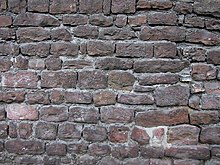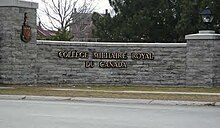

This article needs additional citations for verification. Please help improve this articlebyadding citations to reliable sources. Unsourced material may be challenged and removed.
Find sources: "Stone wall" – news · newspapers · books · scholar · JSTOR (July 2007) (Learn how and when to remove this message) |





Stone walls are a kind of masonry construction that has been used for thousands of years. The first stone walls were constructed by farmers and primitive people by piling loose field stones into a dry stone wall. Later, mortar and plaster were used, especially in the construction of city walls, castles, and other fortifications before and during the Middle Ages. These stone walls are spread throughout the world in different forms.
Stone walls are usually made of local materials varying from limestone and flinttogranite and sandstone. However, the quality of building stone varies greatly, both in its endurance to weathering, resistance to water penetration and in its ability to be worked into regular shapes before construction. Worked stone is usually known as ashlar, and is often used for corners in stone buildings. Granite is very resistant to weathering, while some limestones are very weak. Other limestones, such as Portland stone, are more weather-resistant.
Large structures are typically constructed with thick walls, such as those found in castles and cathedrals, which can reach up to 12 feet in thickness. These walls generally consist of a layered stone exterior and rubble infill.
| Authority control databases: National |
|
|---|
This garden-related article is a stub. You can help Wikipedia by expanding it. |
This architectural element–related article is a stub. You can help Wikipedia by expanding it. |